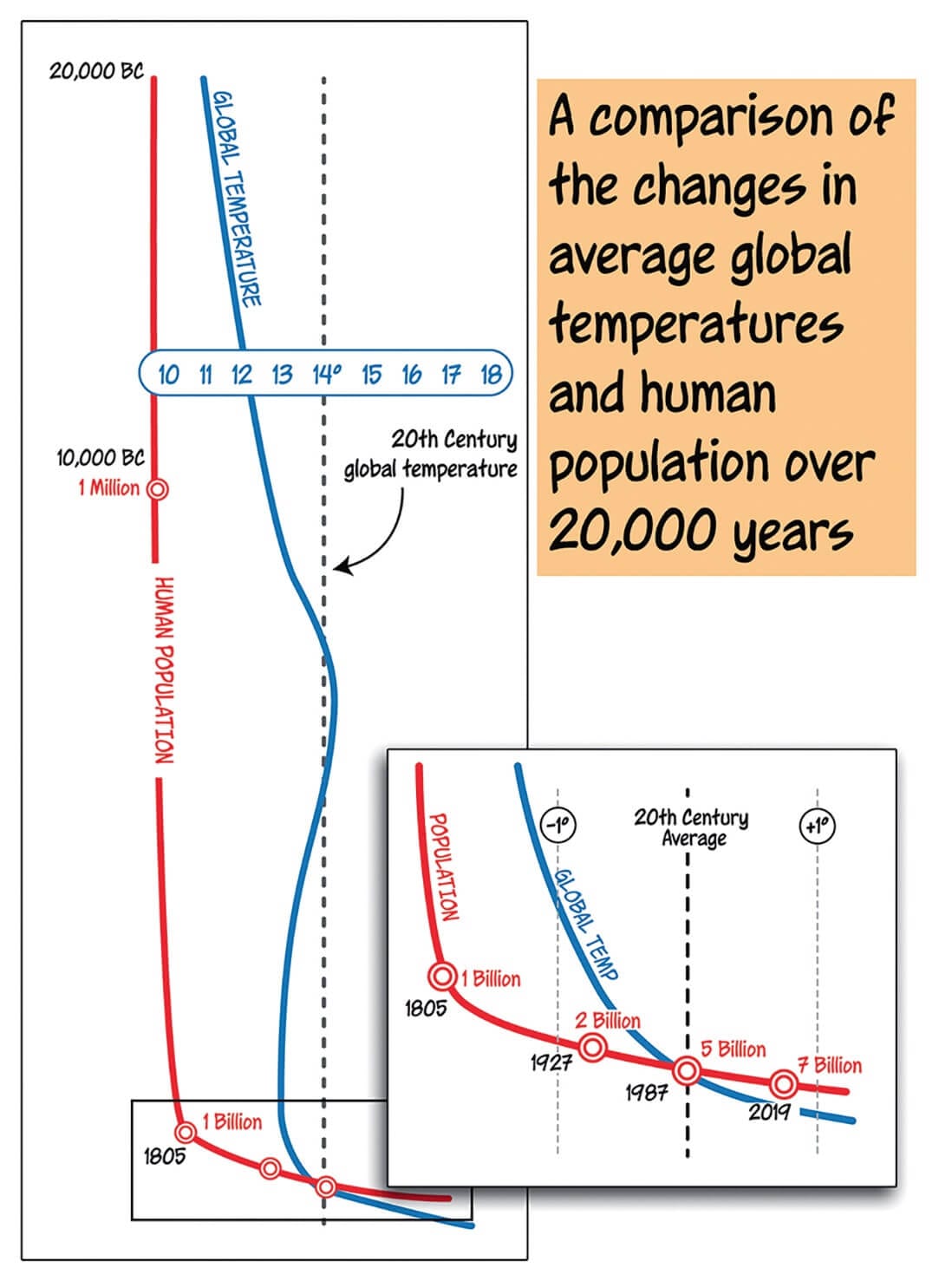Tags: Climate change. Weather.
A letter in The Bribie Islander regarding carbon dioxide (CO2) and climate change prompted me to do a little research of my own on the topic. Natural climate changes are, on a human scale, pretty slow. To understand the scale, we need a reference point, so let’s take the “normal climate” or “global temperature” to be what most of us grew up with – the world’s climate in the 20th Century.
Featured image(above): Screenshot from NASA A Year in the Life of Earth’s CO2
This equates to a global average temperature of about 14°C. In 20,000 BC, there were only about half a million humans in the world, and the global temperature was a full 4° cooler than our 20th Century average – it was a major Ice Age. Over a period of some 16,000 years, by 4,000 BC, the Earth’s temperature rose to about .5° above our 20th Century norm. By about 1300 BC, the global average was around 14° and remained fairly constant until about 1200 AD – so it was steady for about 2,500 years.
Then it fell by just half a degree Celsius, and gave us the era known as “The Little Ice Age”. So, a fall of just .5° in the global temperature resulted in the European rivers freezing over in winter, increased glaciation, and major crop failures and famine. But that fall occurred over 400 years, not the few decades we are witnessing with the current warming cycle. The global average temperature stayed at 13.5 until the early 1800s – that’s when humans come into calculations.
It took from 20,000 BC to 1805 AD for the human population to reach 1 billion. Then the Industrial Revolution started, ushering in the era of giant-scale use of coal and oil, and the pumping of significant amounts of carbon into our atmosphere. Look up a YouTube video from NASA called “A Year in the Life of Earth’s CO2”. It shows that 90% of the world’s atmospheric CO2 is in the northern half of the globe.
Is it a coincidence that the Northern Hemisphere’s share of the human population is also about 90%? No, of course not. After taking 20,000 years to reach 1 billion people, it took just 120 years to add another billion. By 1987 we had 5 billion (3 billion extra in 60 years!) and the global temperature was at the overall 20th Century average. We are now at 7.7 billion, and the global temperature is up .6°.
 When scientists talk about a further .4° increase in global temperatures, it’s not the local weather forecast – it’s a GLOBAL change, covering not just Australia, but the Arctic, Antarctic, Himalayas and the Russian tundras – so .4° is of major significance. The last five years have been the world’s hottest on record, and there’s more to come. Meanwhile, warming over the Arctic has pushed super-cold air south, leading to record-breaking winters in Europe and North America – it’s strange to see warming leading to freezing, but when long established conditions change over decades instead of thousands of years, the whole system is thrown violently out of kilter, like gently turning wind-chimes suddenly getting hit by a basketball (or Earth by a meteor, as the dinosaurs discovered).
When scientists talk about a further .4° increase in global temperatures, it’s not the local weather forecast – it’s a GLOBAL change, covering not just Australia, but the Arctic, Antarctic, Himalayas and the Russian tundras – so .4° is of major significance. The last five years have been the world’s hottest on record, and there’s more to come. Meanwhile, warming over the Arctic has pushed super-cold air south, leading to record-breaking winters in Europe and North America – it’s strange to see warming leading to freezing, but when long established conditions change over decades instead of thousands of years, the whole system is thrown violently out of kilter, like gently turning wind-chimes suddenly getting hit by a basketball (or Earth by a meteor, as the dinosaurs discovered).
Some people like to say that the climate has always changed and always will, implying that humans can have no effect and no control. But it’s flawed logic to say that just because something has happened naturally, that humans can’t cause it too. Species have always gone extinct naturally, but that doesn’t mean that humans haven’t caused extinctions – just ask the next Dodo, Moa or Tasmanian Tiger you see in your travels. The evidence is out there – global warming is happening, climate change is real, and the rapid increase in the human generation of the greenhouse gas CO2 is the cause.
